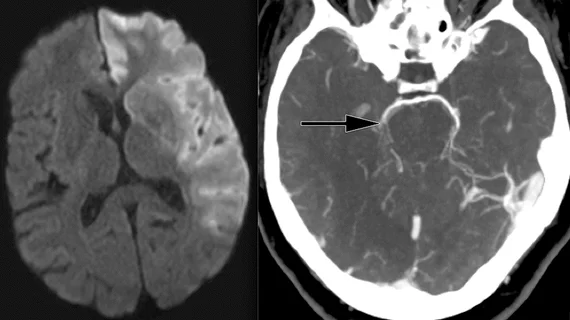Experts highlight early ischemic signs on CT that can estimate onset of stroke
Experts recently revealed non-contrast CT image findings that could help clinicians determine when the timing of stroke onset is unknown.
A new paper published this week in the European Journal of Radiology found associations between early ischemic signs (EIS) and onset to imaging time (OTI) that they believe could help to guide providers in making treatment decisions for patients who suffer an acute ischemic stroke.
“Onset to imaging (OTI) time is a crucial factor in determining treatment eligibility for acute ischemic stroke patients, since the treatments are time-dependent,” corresponding author Laura M. van Poppel, of Biomedical Engineering and Physics at Amsterdam UMC - Academic Medical Center, and co-authors commented. “Patients with an unknown OTI time are often excluded from treatment, or advanced imaging is needed, which is not widely and readily available.”
Experts analyzed 61 studies that touched on the topic of EIS and OTI for their research. Through this they found that hyperdense artery sign prevalence decreased after six hours since stroke onset had passed. As OTI continued to increase, so did hypodensity frequency. Mass effect was also found to be more commonly associated with later OTI times as well.
Of note, the authors shared that the studies that quantified hypodensity on baseline non-contrast scans were able to determine patients’ treatment eligibility within and beyond the treatment window.
They went on to explain that they observed wide variability in EIS in the studies they included in their research and, therefore, cannot be used to directly establish OTI. However, they believe that when considered together, the associations they observed between OTI and EIS on imaging are valuable for estimating OTI when it is unknown and when advanced imaging is not an option.
The study abstract can be viewed here.

